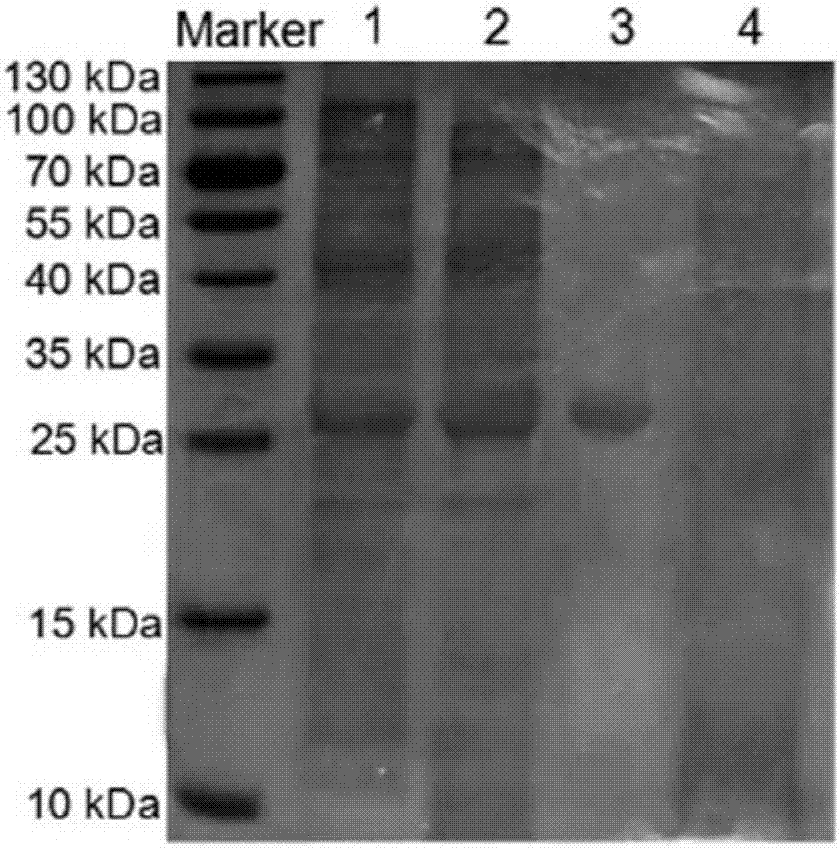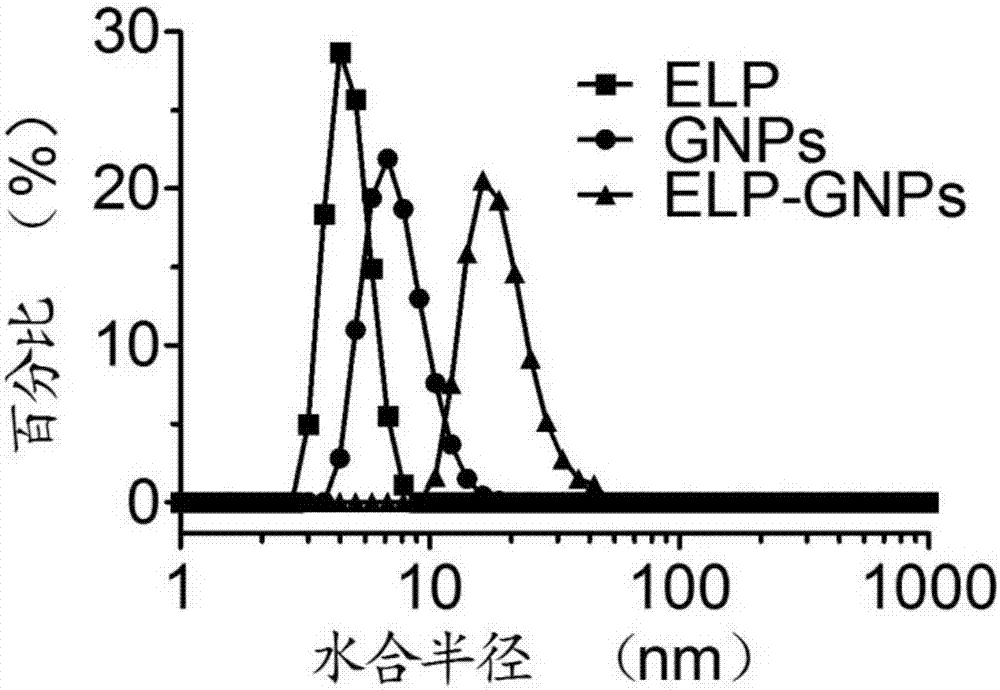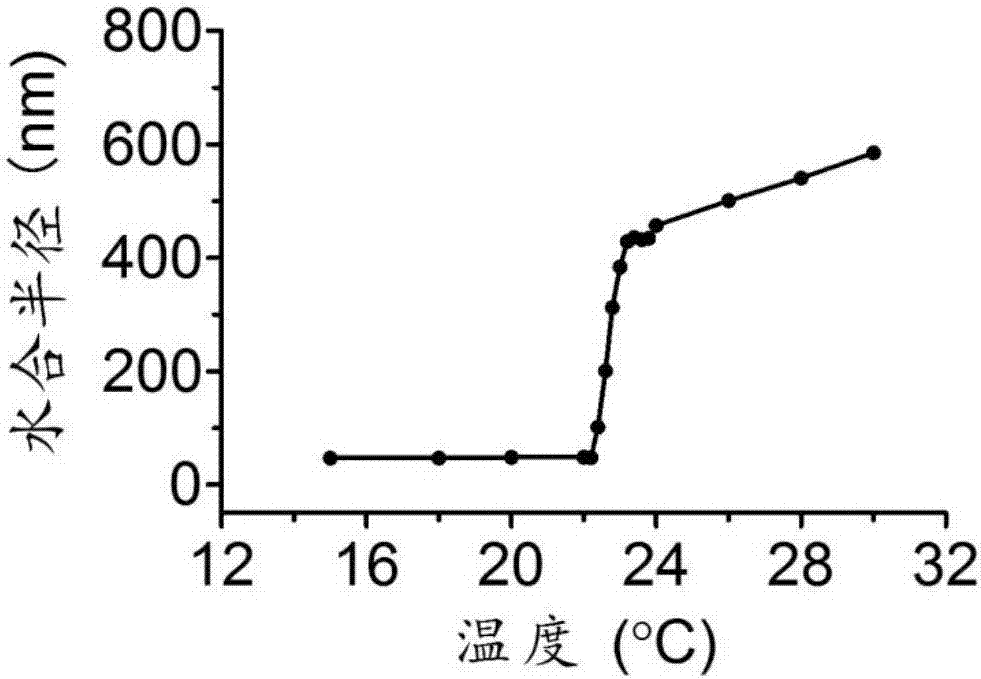Elastin-like polypeptide temperature-responsive nano-material, and preparation method and application thereof
A technology of elastin-like and nanomaterials, which is applied in the field of elastin-like polypeptide temperature-responsive nanomaterials and its preparation and application, and can solve problems such as easy disintegration of micelles, uncontrollable molecular weight, and complex polymer synthesis
- Summary
- Abstract
- Description
- Claims
- Application Information
AI Technical Summary
Problems solved by technology
Method used
Image
Examples
Embodiment 1
[0117] Embodiment 1, preparation of elastin-like polypeptide temperature-responsive nanomaterials (ELP-GNPs)
[0118] The elastin-like polypeptide temperature-responsive nanomaterials provided in this example are called ELP-GNPs, which are gold nanoparticles modified by elastin-like polypeptides; the name of the elastin-like polypeptide is ELP, and the amino acid sequence of ELP is as shown in the sequence listing As shown in 1, the repeat unit in the ELP is the 17th-21st amino acid of sequence 1, and the repeat unit in the ELP is repeated 60 times.
[0119] 1. Preparation of elastin-like polypeptide (ELP)
[0120] 1. Preparation of recombinant vector: use the method of PRe-RDL (McDaniel et al. Reconstruction Allows Rapid and Seamless Cloning of Oligomeric Genes, Biomacromolecules) was inserted into the DNA fragment shown in Sequence 2, and other sequences of the vector were kept unchanged to obtain a recombinant vector, which was named pET-24-ELP.
[0121] 2. Preparation of...
Embodiment 2
[0145] Example 2, ELP-GNPs have the effect of photothermal therapy to kill tumor cells
[0146] Human C8161 melanoma cells (C8161-GFP cells) transfected with green fluorescent protein (green fluorescent protein, GFP) were selected (Jolanta M Topczewska et al., Embryonic and tumorigenic pathways converge via Nodal signaling: role in melanoma aggressiveness, NATUREMEDICINE, VOLUME 12, NUMBER 8, AUGUST 2006) to test the effect of ELP-GNPs photothermal therapy on killing tumor cells by fluorescent staining and MTT method. The experiment was repeated three times, and the specific steps of each repeated experiment were as follows:
[0147] The revived C8161-GFP cells were cultured in culture medium 1 (medium 1 was obtained by adding FBS, penicillin and streptomycin to DMEM / F-12 medium, the mass percentage concentration of FBS was 10% FBS, and the concentration of penicillin was 200 U / mL , streptomycin concentration of 200 μg / mL medium), 5% CO 2 , and cultivated in a 37°C environme...
Embodiment 3
[0150] The cytotoxicity of embodiment 3, ELP-GNPs
[0151] Mouse 3T3 embryonic fibroblasts (3T3 cells) (Cell Bank of the Chinese Academy of Sciences, GNM 3) and human microvascular endothelial cells (HMEC-1 cells) (American Type Culture Collection, ATCC-CRL-3243) were selected, and the MTT assay was used. Test the toxicity of ELP-GNPs samples. The experiment was repeated three times, and the specific steps of each repeated experiment were as follows:
[0152] Inoculate 3T3 cell suspension in a 96-well plate (50 μL / well, 5000 cells / well, 3T3 cell suspension was obtained by resuspending 3T3 cells in medium 2, which was added FBS, penicillin and chain to DMEM medium The mass percentage concentration of FBS obtained by using 10% FBS, the concentration of penicillin is 100 U / mL, and the concentration of streptomycin is 100 μg / mL culture medium) and cultivated until adherent, and the medium is aspirated before the experiment. The ELP-GNPs of Example 1 were serially diluted with me...
PUM
| Property | Measurement | Unit |
|---|---|---|
| Phase transition temperature | aaaaa | aaaaa |
Abstract
Description
Claims
Application Information
 Login to View More
Login to View More - R&D
- Intellectual Property
- Life Sciences
- Materials
- Tech Scout
- Unparalleled Data Quality
- Higher Quality Content
- 60% Fewer Hallucinations
Browse by: Latest US Patents, China's latest patents, Technical Efficacy Thesaurus, Application Domain, Technology Topic, Popular Technical Reports.
© 2025 PatSnap. All rights reserved.Legal|Privacy policy|Modern Slavery Act Transparency Statement|Sitemap|About US| Contact US: help@patsnap.com



